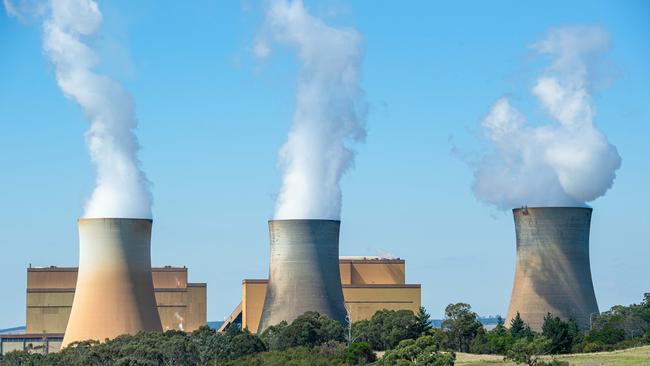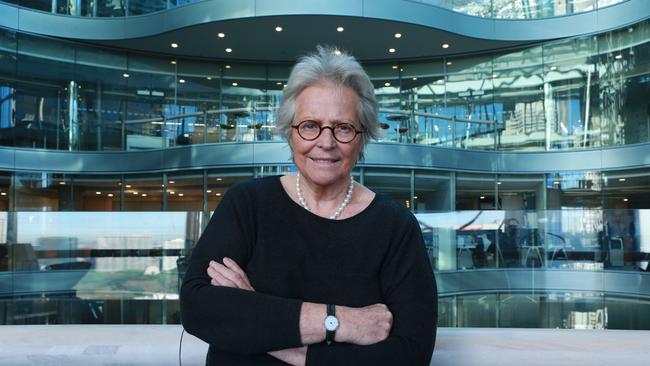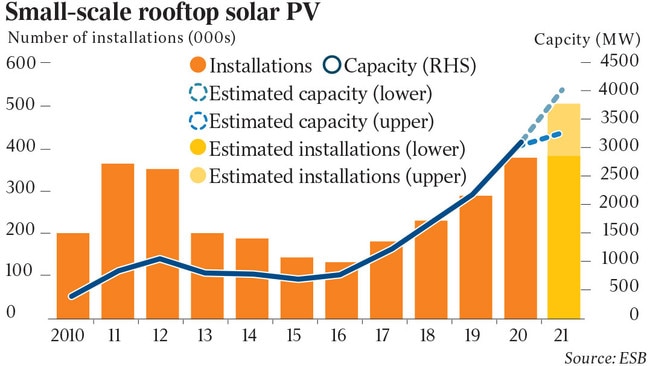Power grid shake-up to bolster supply
The government’s energy adviser has shortlisted reforms to handle the rapid shift to renewables from coal in what’s shaping as a radical shake-up of the grid.

A radical shake-up of Australia’s power grid has been floated, including mechanisms to ensure enough reliable generation is in place, more closely handling the exit of threatened coal plants and developing a national underwriting scheme to avoid states splintering on energy policy.
With three chief executives exiting the nation’s big coal generators in the last week alone — including EnergyAustralia boss Cath Tanna on Thursday — and cheap power prices threatening spending on new supplies, the government’s energy adviser has shortlisted reforms to handle the rapid shift to renewables from coal.
New measures suggested include governments working with industry to identify back-up sites should coal plants suddenly exit due to technical failure, and a new market assessment that would weigh whether coal stations could still operate commercially beyond an early closure date if the system requires it.
“As new renewables place downward pressure on future expected energy spot and contract prices, the commercial viability of thermal generation continues to erode. This creates a real risk of lumpy thermal exits occurring earlier than anticipated,” the ESB said in its post-2025 market design paper.

Three proposed exit mechanisms are aimed at addressing reliability risks as coal winds down, including increased transparency on mothballing and seasonal shutdowns, expanding notice of closure requirements and boosting the power of state governments to better manage the early exits of coal plants.
Coal, which currently provides 70 per cent of electricity, will contribute less than a third of supply by 2040 and is now widely expected to be forced out earlier than previously planned retirement dates as competition from renewables and carbon constraints render plants uneconomic.
More coal plants will close early, according to the ESB, prompting it to boost ways to encourage private investors to “step up” with new supplies rather than wait for governments to act.

“It’s my view they will come out earlier than their technical lives because they’re just losing money. They’re burning coal every hour of the day but they’re only getting dispatched some hours and the more renewables are coming in, the less hours they’re getting dispatched,” ESB chair Kerry Schott said.
Removing a trigger for the Morrison government’s Retailer Reliability Obligation and instead making it a permanent obligation for electricity companies to guarantee dispatchable power for businesses and consumers is also being considered, along with boosting power system security.
Proposals include a national approach to ensure enough firming generation — such as gas and pumped hydro — is in place, amid fears decisions by the Victorian and NSW governments to pursue their own policies could prolong a spending freeze by investors.
“Each government is doing their own thing and they’re not paying attention to the fact they’re part of a national market — and whatever it is they do is likely to have an impact on others,” Ms Schott said.
“Governments are very keen on getting more renewables in and they’re very keen on helping with the transmission build and getting that done. But if you sit and wait for the market to fill what’s clearly a capacity gap somewhere, you’ve got to have pretty strong nerve to be able to wait for the market to do it when you know if the lights go out you’ll lose the next election. So I think we need some mechanisms to encourage that capacity to come in in a timely way.”

The establishment of an “operating reserve market” within the national electricity market is also being pushed, to ensure generators that bid into the market could deliver on promises as energy usage soars in summer.
Rapidly falling wholesale power prices are also piling pressure on balance sheets and forcing power companies to quickly map out how their businesses will drive earnings as clean energy routs daytime prices.
The head of Queensland’s largest power company quit over his comments that it was making plans to transition from a dependence on coal to renewables, while AGL Energy boss Brett Redman immediately left his post amid messy demerger plans involving a spin-off of its coal plants. Ms Tanna will also leave EnergyAustralia, which accelerated the closure of its Yallourn coal plant by four years.
Allowing better two-way trading of power for households with rooftop solar and batteries, and matching up renewable generation with transmission to further turbocharge large-scale solar and wind, are also among the proposals.
By 2035 nearly 90 per cent of power demand could be met by renewable generation during periods through the day. However, that will require up to 50 gigawatts of large-scale solar and wind to be added under the most aggressive plan to cut emissions, representing nearly all the current capacity of the market to be built in just two decades.
Up to 19GW of firmed dispatchable resources — such as gas, pumped hydro and batteries — will be required in the next two decades to back up renewables in Australia, forecasts show.
Energy Minister Angus Taylor said the scale of change under way in the market showed no signs of slowing.
“The post-2025 work is important work and we must get this right to protect consumers from high prices and reliability risks as technologies in the energy sector change,” Mr Taylor said. “With the strong growth in variable renewable energy, the post-2025 reforms will strengthen investment signals to encourage dispatchable capacity and deliver a reliable and secure electricity system with lower emissions.”





To join the conversation, please log in. Don't have an account? Register
Join the conversation, you are commenting as Logout